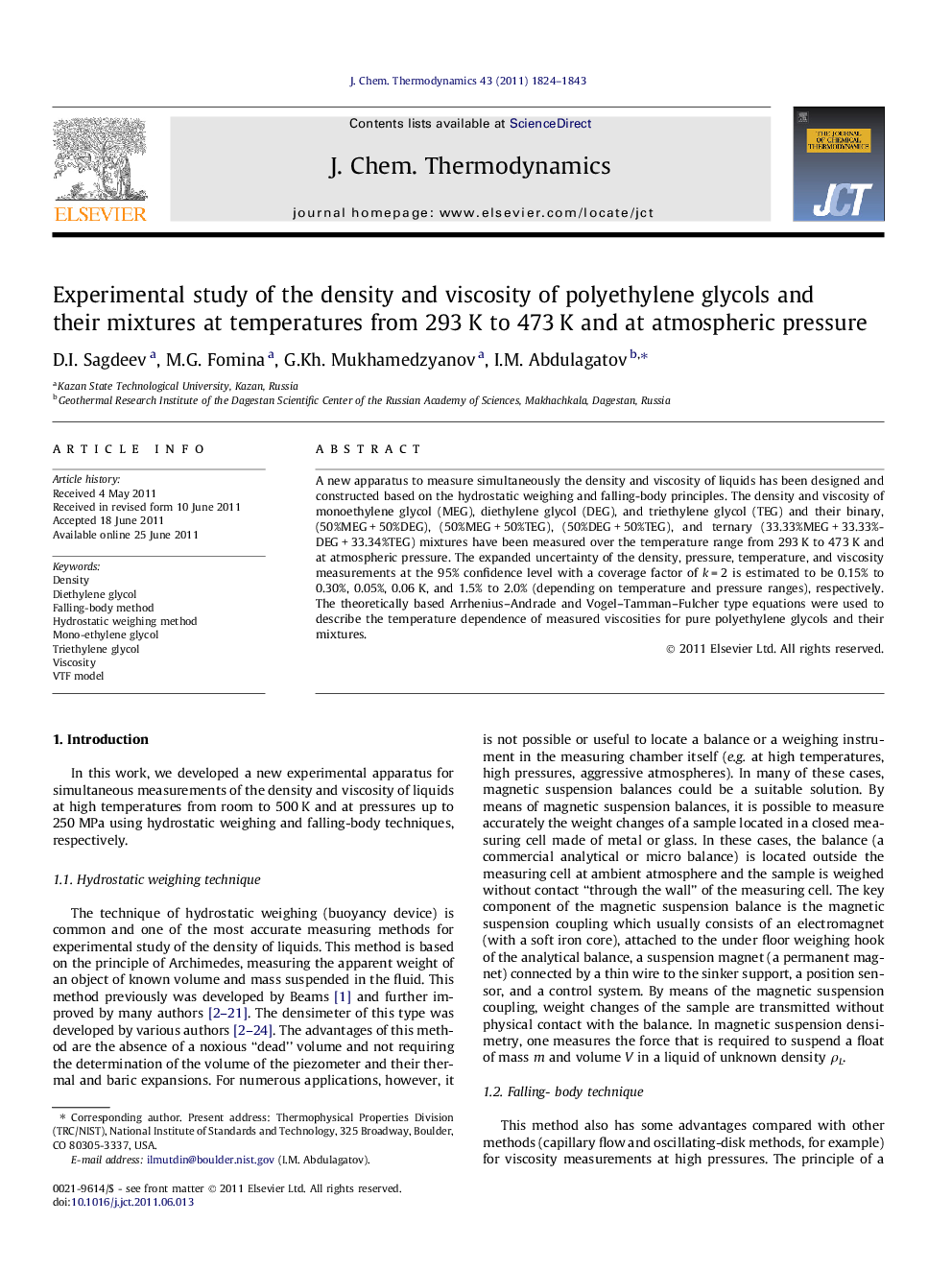| Article ID | Journal | Published Year | Pages | File Type |
|---|---|---|---|---|
| 216394 | The Journal of Chemical Thermodynamics | 2011 | 20 Pages |
A new apparatus to measure simultaneously the density and viscosity of liquids has been designed and constructed based on the hydrostatic weighing and falling-body principles. The density and viscosity of monoethylene glycol (MEG), diethylene glycol (DEG), and triethylene glycol (TEG) and their binary, (50%MEG + 50%DEG), (50%MEG + 50%TEG), (50%DEG + 50%TEG), and ternary (33.33%MEG + 33.33%DEG + 33.34%TEG) mixtures have been measured over the temperature range from 293 K to 473 K and at atmospheric pressure. The expanded uncertainty of the density, pressure, temperature, and viscosity measurements at the 95% confidence level with a coverage factor of k = 2 is estimated to be 0.15% to 0.30%, 0.05%, 0.06 K, and 1.5% to 2.0% (depending on temperature and pressure ranges), respectively. The theoretically based Arrhenius–Andrade and Vogel–Tamman–Fulcher type equations were used to describe the temperature dependence of measured viscosities for pure polyethylene glycols and their mixtures.
► Viscosity and density of polyethylene glycols. ► Combined experimental apparatus for density and viscosity measurements. ► Vogel–Tamman–Fulcher model for viscosity.
